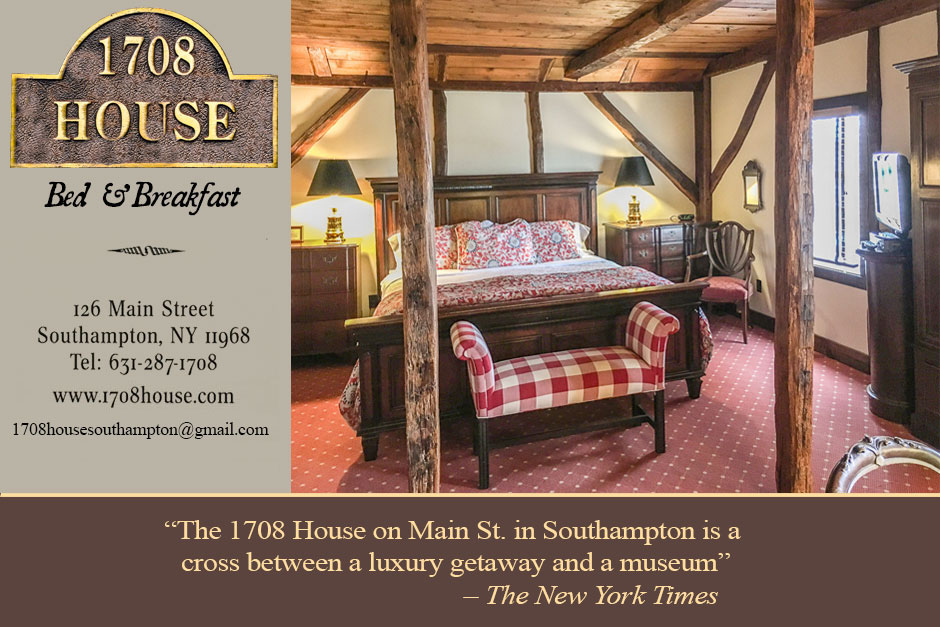

Photo of the Week
August 5, 2024
FROM THE SCHS LIBRARY ARCHIVES
“How shall we know it is us without our past?”
– John Steinbeck
~~~~~~~~~~~~~~~~~~~~~~~~~~~~~~~~~~~~~~~~~~

Idle Hour Artist Colony, Oakdale. (This image shows the Lodge at Idle Hour, circa 1960. Photograph from the Carl Starace Collection of the Suffolk County Historical Society Library & Archive. Copyright © Suffolk County Historical Society. All rights reserved.)
—————————
In 1926 Lucy Pritchard Sawyer Thompson and her son William devised the idea of creating an artist colony on the former William K. Vanderbilt Idle Hour estate in Oakdale. Ms. Thompson purchased the 16-acre farm area from Edmund G. and Charles Burke, who had bought the entire 900-acre estate from Harold S. Vanderbilt (who had inherited the estate upon the death of his father, William K. Vanderbilt, in 1920). William K. Vanderbilt had been a South Side Sportsman’s Club member and developed his country estate into a showplace along the South Shore. His 100-room mansion, designed by architect Richard Morris Hunt, was completed in 1911, along with other buildings on the property, including a carriage house, conservatories, and dairy and livestock barns.
When Ms. Thompson and her son purchased the 16-acre property, they saw the possibility of turning the elegant buildings into homes and studios. They soon converted the great stable, cow barn, cheese house, calving house, bull pen, poultry area, piggery, and clock tower into studio apartments without disturbing the original exteriors. The buildings were not heated so living in them was restricted to the warmer months. The studio apartments were designed to be sold, but some were rented.
Lucy Thompson, who enjoyed a certain talent as an artist, represented several artists at her Manhattan art studio. At the Idle Hour Artist Colony she soon gathered a group of artists, including John Costigan, Harry Allen Weston, Carl Nordell, Lynn Morgan, Ernest Albert, George Elmer Browne, Edwin Forrest Murdock, Myron Van Brunt, and Roman Sintas. An exhibition hall was set up at the colony where annual art and sculpture exhibits were planned, and a small theater group was organized. Schools of dramatic art, expression, dancing, and painting were arranged. A club house with a lounge area and restaurant was open to residents for a membership fee of $10 per year, and land was made available for members to grow vegetable and flower gardens.
The colony enjoyed success for several seasons, with a flurry of street fairs, exhibits, fancy dress parties, and dinners at the club. However, with the Great Depression, many of the artists were unable to meet their rent and mortgage payments, and the Thompsons had to close many of the apartments. Soon the Thompsons were unable to keep the buildings in repair, and new owners took over the various structures in the colony. Today, artists continue to live in some of the units, and other dwellings are owned by those who enjoy the charm of residing in a turn-of-the-century legend.
Suggested Reading: “Idle Hour Artist Colony” (Laurel Publications, 1992).
by Wendy Polhemus-Annibell, Head Librarian
**************************
UPCOMING BOOK & BOTTLE LECTURE
—————————-

————————————

Copyright © 2024 Suffolk County Historical Society. All rights reserved.

—————————————
CLICK HERE TO VISIT OUR WEBSITE
—————————–
==================================================

AAQ / Resource: 1708 House, Southampton / Bed & Breakfast
===========================================

AAQ / Resource: Riverhead Ford
___________________________________________________________
|
|
||||
